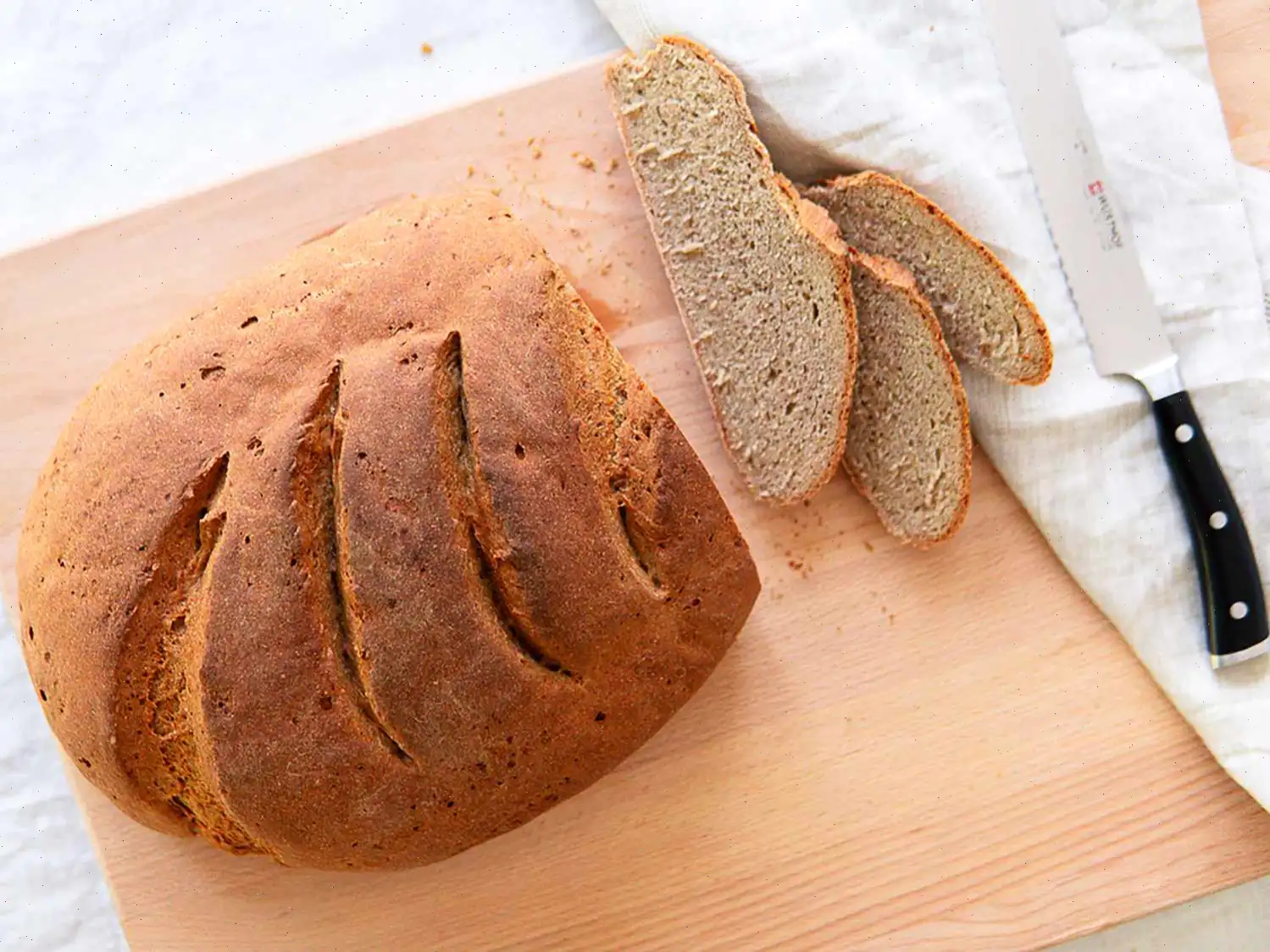
German Zwiebelkuchen (Onion Pie) Recipe
Ingredients
This recipe was developed at its original yield. Ingredient amounts are automatically adjusted, but cooking times and steps remain unchanged. Note that not all recipes scale perfectly.
- 6 pounds onions, sliced
- 4 slices bacon
- 1 (16 ounce) sour cream
- 4 large eggs
- 2 tablespoons all-purpose flour
- teaspoon salt
- teaspoon caraway seed
- 1 (14.1 ounce) package pastry for a double crust pie
Directions
Step 1: Preheat the oven to 425F (220C). Line a 15x10-inch pan or large pizza pan with the prepared dough, making sure the dough extends up the sides of the pan.
Step 2: Saut the onions in a skillet until translucent. Once done, transfer the cooked onions into a large mixing bowl.
Step 3: Place the bacon in a large, deep skillet. Cook over medium-high heat until evenly browned. Drain the bacon, chop it, and add it to the onions. Mix everything well.
Step 4: Stir in the sour cream until fully incorporated.
Step 5: Beat the eggs just enough to break up the yolks, then mix them into the pie mixture.
Step 6: Add flour to thicken the mixture, as the onions will release a lot of water. Then, add the salt and mix thoroughly.
Step 7: Pour the prepared mixture into the prepared pan. Sprinkle the top with caraway seeds.
Step 8: Bake in the preheated oven for about 1 hour, or until the onions start to turn golden brown on top.
Nutrition Facts (per serving)
- Calories: 441
- Total Fat: 26g (34% Daily Value)
- Saturated Fat: 10g (52% Daily Value)
- Cholesterol: 93mg (31% Daily Value)
- Sodium: 415mg (18% Daily Value)
- Total Carbohydrates: 43g (16% Daily Value)
- Dietary Fiber: 5g (17% Daily Value)
- Total Sugars: 12g
- Protein: 10g (21% Daily Value)
- Vitamin C: 13mg (15% Daily Value)
- Calcium: 117mg (9% Daily Value)
- Iron: 2mg (11% Daily Value)
- Potassium: 540mg (11% Daily Value)
* Percent Daily Values are based on a 2,000 calorie diet. Your daily values may be higher or lower depending on your calorie needs. ** Nutrient information is not available for all ingredients. Amount is based on available nutrient data. If you are following a medically restrictive diet, please consult your doctor or registered dietitian before preparing this recipe for personal consumption.

History and Origin of Zwiebelkuchen
German Zwiebelkuchen, or Onion Pie, is a traditional dish from the southwestern region of Germany, particularly associated with the wine-producing areas like the Palatinate (Pfalz). This savory pie has been a staple during the autumn months, especially during the wine harvest season, as it pairs wonderfully with freshly pressed wine or "Federweier" (a young, unfermented wine). The dish is believed to have been enjoyed by farmers who would gather in local wine taverns or "Besenwirtschaften" to share hearty meals. Its origins are steeped in the rural culinary traditions of Germany, where the simplicity of onions, bacon, and sour cream came together to create a satisfying meal for the hardworking community.
Regional Variations and Features
Zwiebelkuchen is particularly popular in the southwestern regions of Germany, such as the Palatinate and Baden-Wrttemberg, where the production of wine is a central part of local culture. In these regions, the pie is often served at "Besenwirtschaften" (wine taverns) that open seasonally during harvest time. The dish is typically made with a yeast-based dough in these areas, although some recipes use a standard pastry crust. Depending on the locality, the pie may feature caraway seeds, which lend a subtle, earthy flavor, while others may omit them. The filling is usually a mixture of caramelized onions, bacon, eggs, sour cream, and flour to create a rich, savory custard-like consistency.
What Sets Zwiebelkuchen Apart from Similar Dishes?
While Zwiebelkuchen might remind you of other savory pies like quiches or French onion tarts, it stands out due to its rustic, hearty nature. Unlike a traditional quiche, which often features a more delicate custard, the filling of Zwiebelkuchen is thicker, with the strong presence of caramelized onions and the inclusion of bacon, which adds a savory depth. Additionally, Zwiebelkuchen's dough is typically more robust and hearty, often using a thicker crust or even a yeast-based dough. The use of sour cream rather than cream or milk for the filling also gives it a distinctive tangy flavor.
Where is Zwiebelkuchen Typically Served?
Zwiebelkuchen is traditionally served in Germany at wine taverns during the autumn, particularly during the Federweier season, when new wine is first pressed. It is also commonly enjoyed at local festivals, family gatherings, and community celebrations. In the U.S. and other countries, it has made its way into German-themed restaurants and Oktoberfest celebrations, where it is often served alongside sausages, salads, and, of course, a good German beer or wine. The combination of savory, rich flavors and the seasonal nature of the dish makes it a perfect autumn comfort food.
Interesting Facts About Zwiebelkuchen
1. Wine Pairing: Zwiebelkuchen is often paired with "Federweier," a young, unfermented wine, which is only available in the fall. The pie's savory profile complements the light, fruity notes of the wine, making it a perfect match for the harvest season.
2. Famous Festivals: In many parts of Germany, especially in the Palatinate, Zwiebelkuchen is a star attraction during the "Weinlese" (wine harvest) festivals. Its commonly served at local wine taverns, where visitors can sample both the new wine and traditional foods like Zwiebelkuchen.
3. Rural Tradition: Zwiebelkuchen is deeply embedded in rural German culture. It was traditionally a dish prepared by farmers after a long day's work, making it a dish that symbolizes the spirit of German agriculture and the autumn harvest.
4. Regional Variations: In some parts of Germany, Zwiebelkuchen is made with a dough that is almost pizza-like, thinner and more crusty, while other regions prefer a more traditional, buttery pie crust. Some recipes even include cheese on top, giving the pie an extra layer of flavor.
FAQ about German Zwiebelkuchen (Onion Pie) Recipe
Comments
Scott Nguyen
09/03/2024 08:47:33 PM
Review Update: While the ingredients in this recipe are fantastic, the cooking process needs some serious improvement. Firstly, start by cooking the bacon until crispy and then set it aside. Next, sauté the onions in the bacon fat, seasoning them with salt, pepper, and a teaspoon of nutmeg. After the onions are cooked, add twice the amount of flour called for in the recipe. Mix in the chopped crispy bacon and let the mixture cool to room temperature. Then, add the sour cream and mix well before incorporating the eggs. This step is crucial for a better outcome. Additionally, consider lowering the oven temperature to 375°F after the initial 20 minutes of baking and continue for about 30 more minutes. Remember, the key to success lies in a clean knife test and a perfectly done crust, not just following the suggested baking time.
Heather Green
10/17/2024 02:04:30 AM
This recipe brought me back to the flavors I remember from my time in Germany 40 years ago. I made some adjustments to cater to my vegan diet by skipping the bacon and using mashed tofu instead of sour cream. I also found that one large onion was enough for two small pies. Overall, this recipe is excellent! Thank you!
Ryan Jackson
05/27/2024 11:40:22 AM
I modified the recipe to make it more like a pizza, reducing all the measurements by half. I recommend using pre-made crescent roll or biscuit dough as the crust for a heartier taste. I also added melted cheese on top during the last 5 minutes of baking, which turned out delicious! This pizza-style twist on Zwiebelkuchen bakes much faster and would be a perfect dish to bring to a potluck dinner.
Donald Perez
04/06/2024 01:50:46 PM
Flavorful and delicious. I swapped caraway seeds for thyme since I didn't have it, and it still gave a lovely taste! It definitely reminded me of my grandmother's onion pie.
Joseph Jones
12/09/2023 05:27:16 AM
I followed the recipe precisely, except for the caraway seed.
Jacob Thompson
06/27/2024 10:56:38 AM
I wasn't sure how to properly place the pie crust in the pan, so I sort of just lined it. Other than that, it turned out okay. It tasted good.








